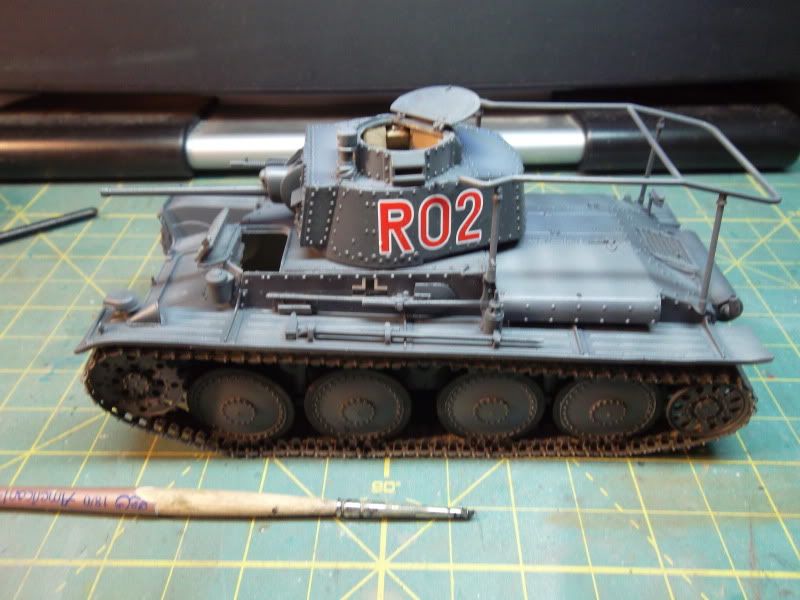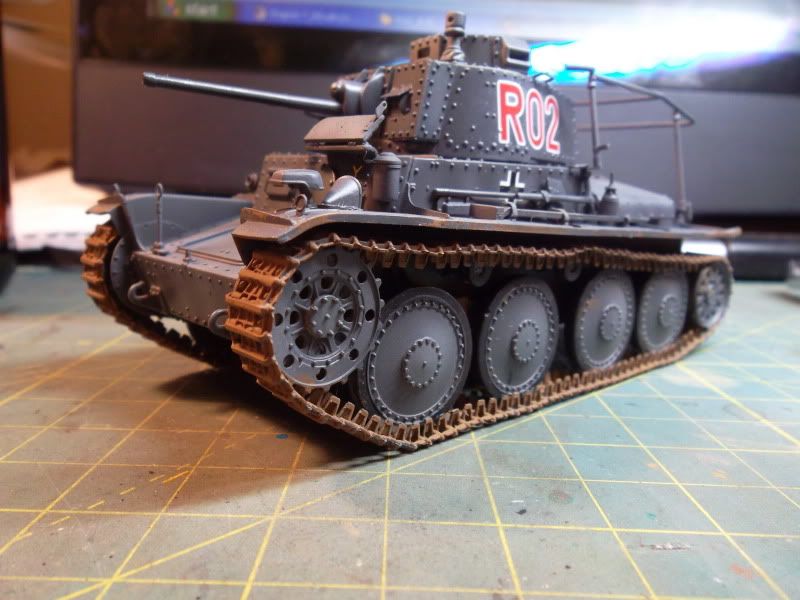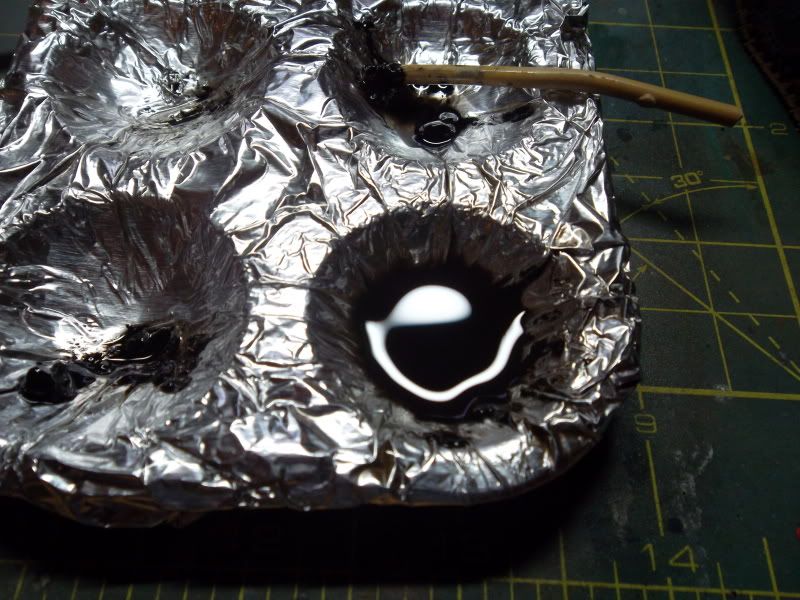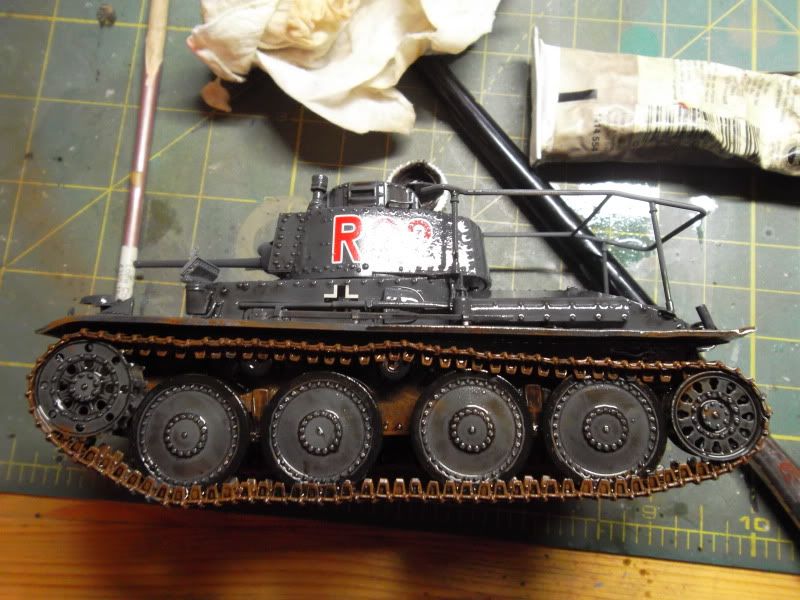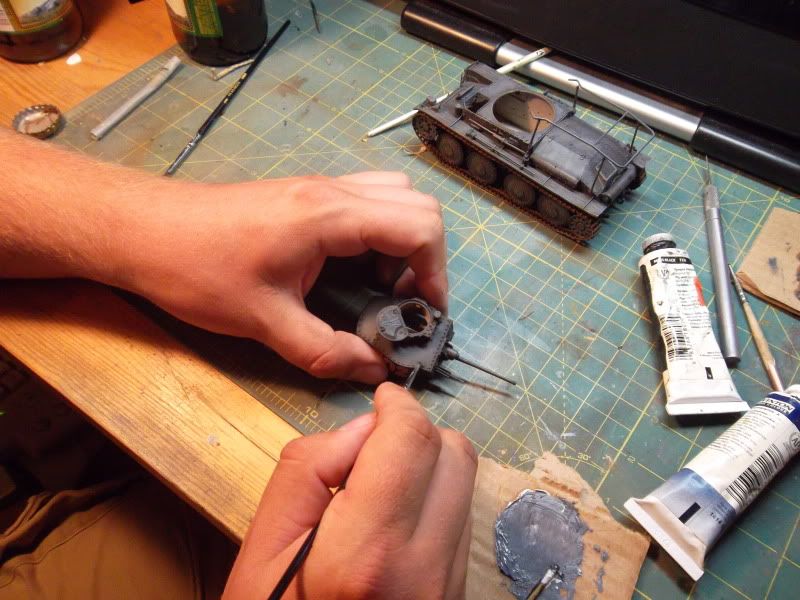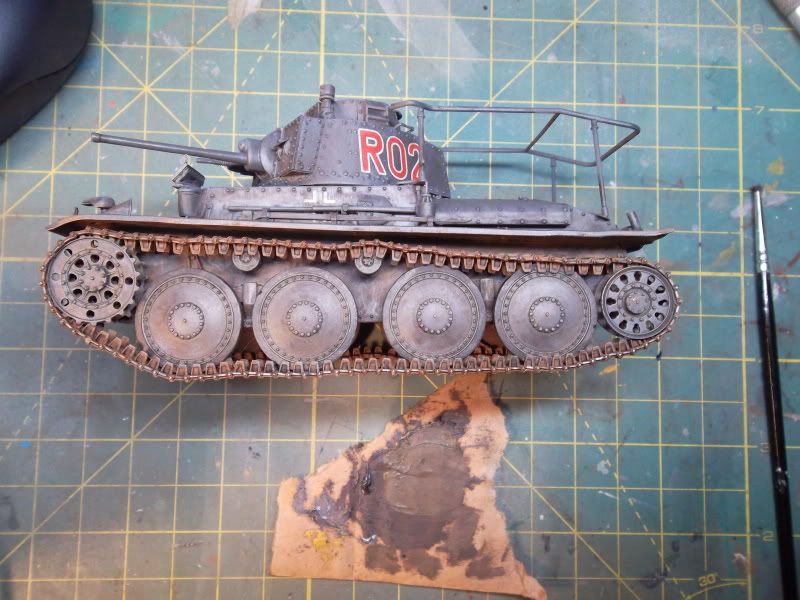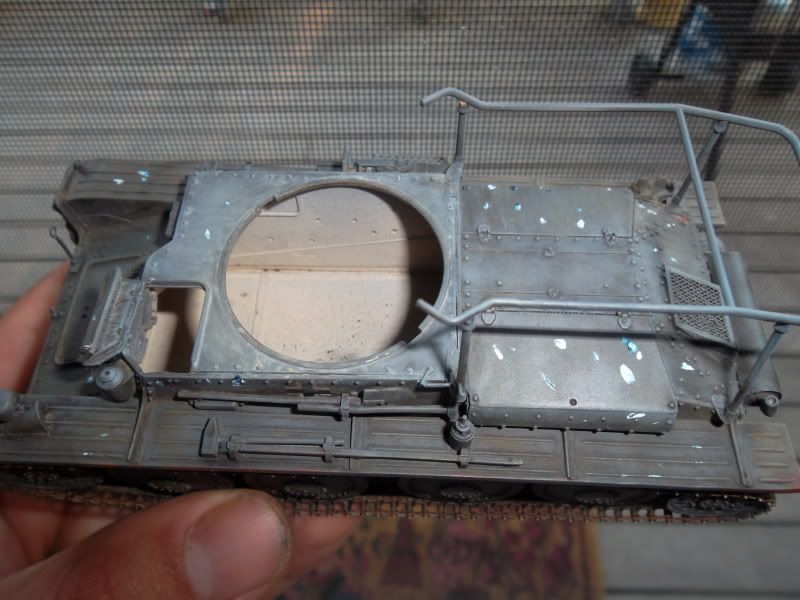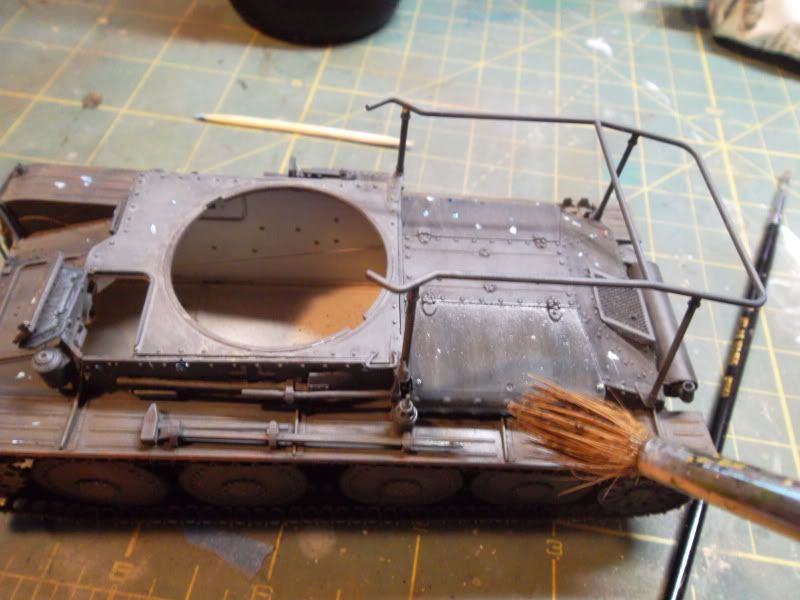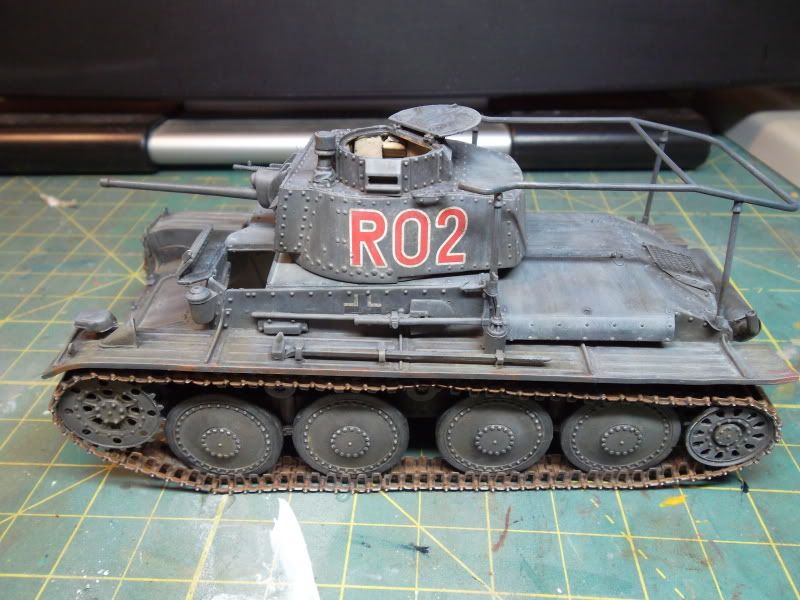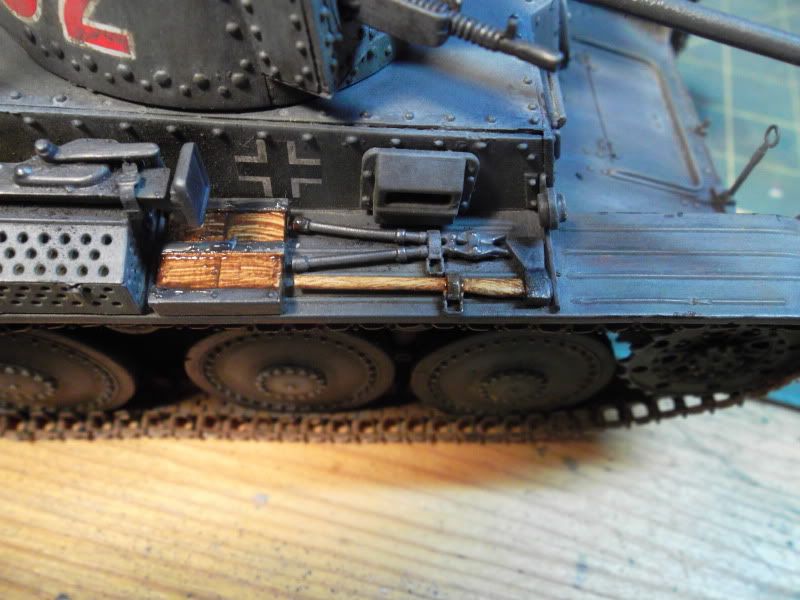This treatment is results in a somewhat stylized finish which some modelers frown upon as being unrealistic. To this I reply with a quote from master modeler Tony Greenland who wrote that he is interested in modeling the AFV and not interested in modeling "The dust and the mud they fought in". Again, this is not the only method, and it may not appeal to you, so go forth and experiment.
One last note. I use an airbrush to paint my models, but many of the airbrush steps described below can be substituted with oil paints or pastels. I will mention non airbrush alternatives to the steps if I am aware of them.
This thread is being written more or less in real-time, hence it will be updated as I make progress on the model. Feel free to follow along if you have a kit of your own at the painting stage.
Without further ado; a simple technique for finishing model AFVS. So easy, even I can do it.
The model being built in this instance is a 1/35 Tristar 38(t) light tank finished in overall dark gray. This method presented here is especially effective on monochrome camouflage schemes but can also be applied to polychrome camo and works equally well in all scales. What I describe here is nothing new, its just a synthesis of several methods which I found to be simple but elegant.
To begin with, I often (though not always) paint my models in toto . In other words, I build the whole kit prior to painting. I only leave off the most fragile elements, such as aerials, photo-etch (PE) chains, and the like.
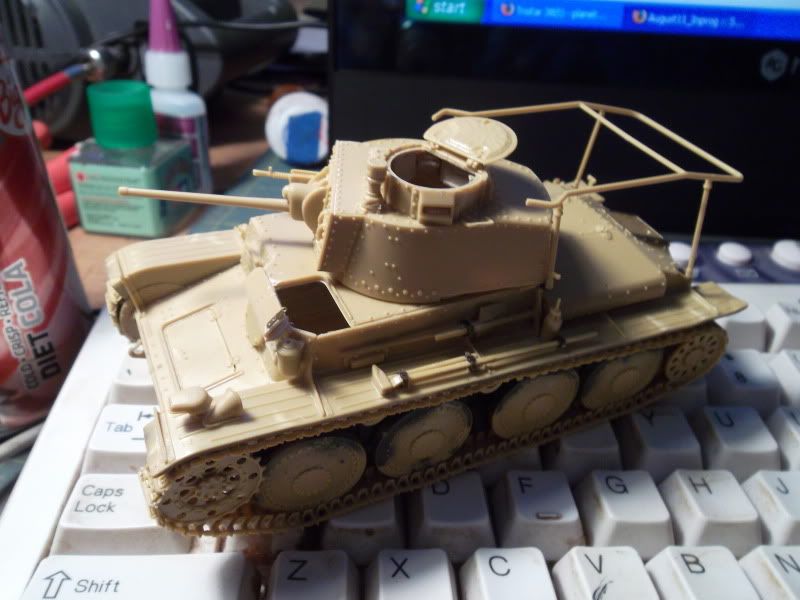
Since this kit includes several PE elements, I first sprayed it with a coat of Tamiya primer. Most autobody primers work as well. I prefer to use a neutral colored gray primer, though others prefer browns and blacks. Autobody primer is a cheap alternative to Tamiya. If you will be painting your kit with acrylics, then a primer is essential. If you prefer enamels, it may not be necessary if you have no PE parts to worry about. Paint applied directly to PE metal tends to rub off.
After the primer coat had cured for a few days, I airbrushed the model with Tamiya German Gray. I made sure to get the paint into all of the little nooks and crannies on the kit. I wasn't overly concerned about coverage on the tracks though.
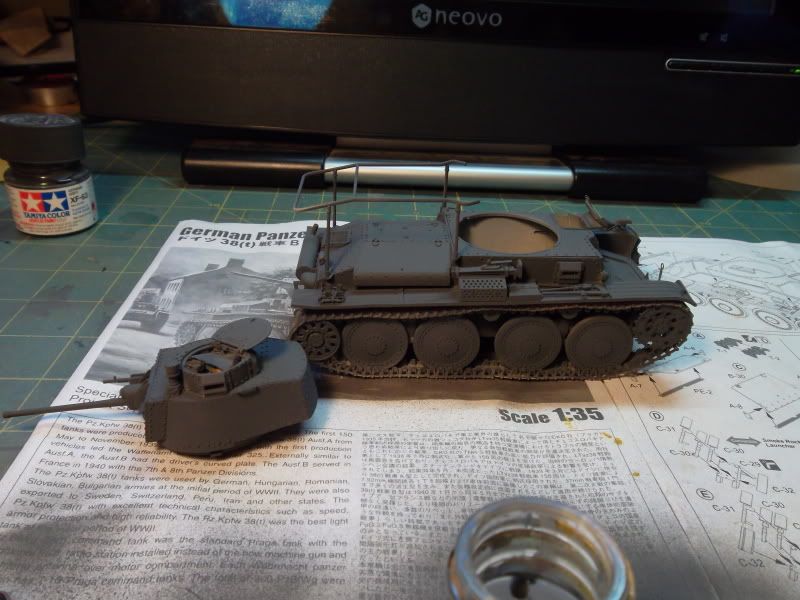
After the base coat was applied, I lightened the german gray with some Tamiya deck tan paint (approximately 3:1) and then thinned the paint about 1:1 with isopropyl to achieve a semi-translucent mixture. I sprayed this on in irregular splotches onto the the horizontal surfaces of the tank, and then as vertical streaks on the turret and hull sides. On the wheels I sprayed the lighter shade in a circle around the outside of the hub.
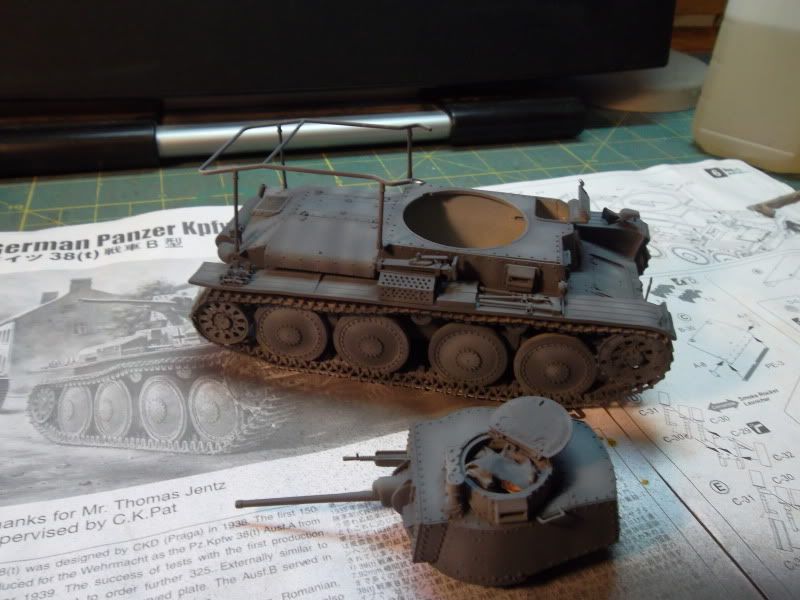
Those of you who do not have an airbrush can achieve a similar result with oil paints. Mix up a mixture which is a shade or two lighter than your base coat, and then using a soft flat brush, apply small amounts of the oils in similar patterns to those described above. This is important, a little bit of paint will go a long way here. You don't want to be drybrushing at this stage, but you do want the color you apply to be semi-translucent, and allow the base coat color to show through. Also make sure to feather your edges. You do not want a stark solid border between your base coat and your highlight. Give your oils a few days to dry, and then seal everything in with a clear coat. (See also the discussion of dot-filters several postings below)
Do not be overly concerned if the contrast between your base coat and highlight coat looks excessive. The following steps will tie everything together.
You may also skip this step entirely, and simulate your highlights and shadows with washes and drybrushing, which will be completed further down the line
When this thread continues, We will apply decals to the kit and then begin the simple process of color alteration.
